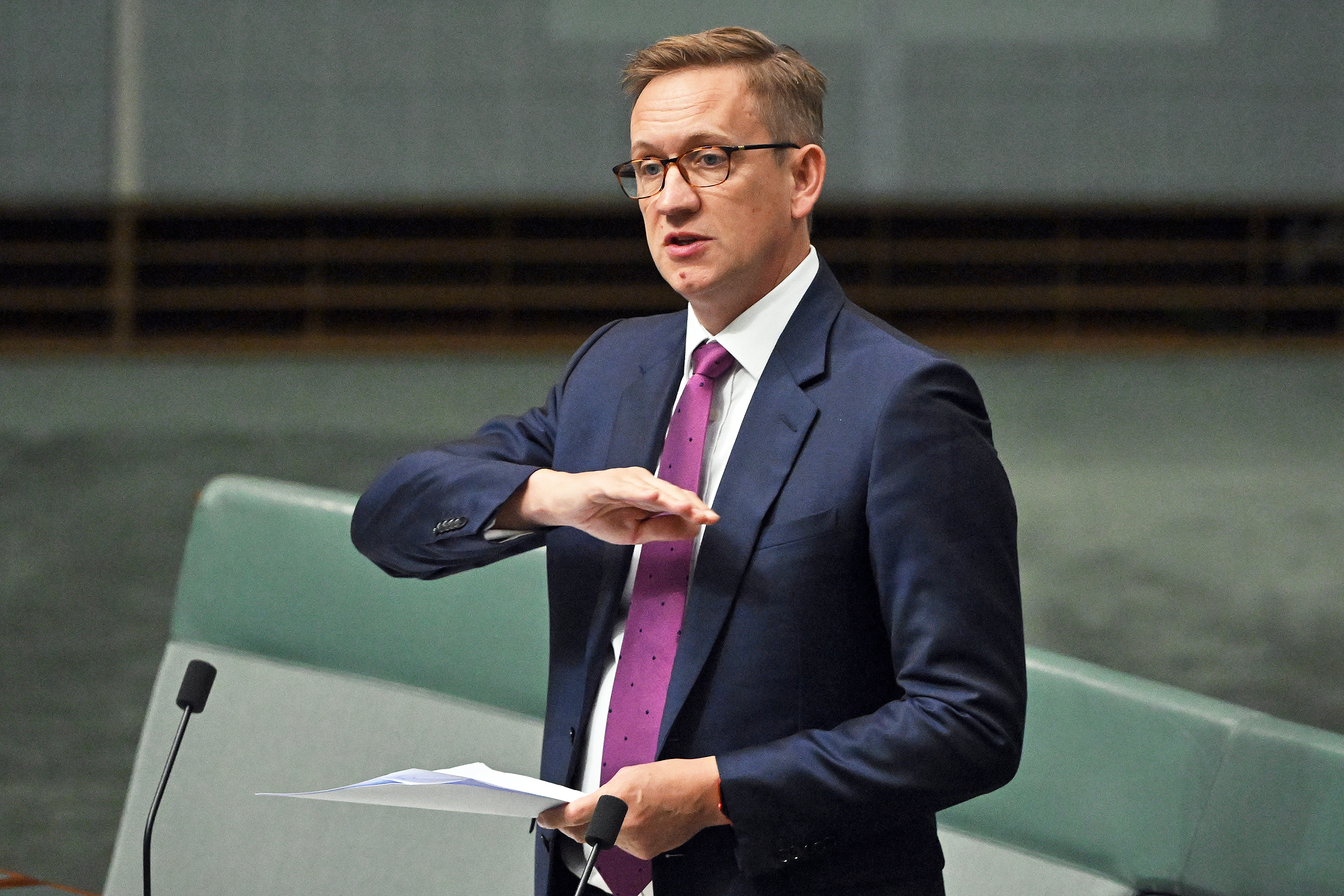It could be mistaken for a script for the ABC’s Utopia — a report so scathing of a government service that it seems too bad to be true. The parliamentary inquiry into employment services found that more than 70 per cent of jobseekers receiving government benefits have had their payments suspended, often for trivial or non-existent breaches, by an automatic system reminiscent of robodebt. With the robodebt royal commission having found that welfare fraud is miniscule, this amounts to “using a nuclear bomb to kill a mosquito.”
As for the “jobs plan” signed by the unemployed before they receive government benefits, it is “frankly Orwellian,” says the report — no more than a list of excessive, often punitive compliance measures rather than a realistic path to employment. The so-called mutual obligations “are actually making people less employable.”
Excessive competition in the privatised system means that the situation in some regional towns and disadvantaged suburbs has reached “the point of utter almost-comical absurdity,” with service providers offering an identical product on almost every block.
Turnover among the private providers’ poorly paid and poorly trained frontline staff is 40 per cent each year. As for the 20,000 staff overall, they spend half or more of their time on administration rather than working with the unemployed or employers. In the last round of contracts, the Department of Workplace Relations replaced all providers in 22 per cent of regions, leading to “devastating” disruption for jobseekers, employers and the providers themselves.
Just 4 per cent of employers find it worth their while engaging with the system. “There is very large expenditure on the operating core of the system,” concluded the inquiry, but “very little on direct job creation or employer engagement.”
A more excoriating condemnation of a government service would be hard to find. All the more so because it came from a parliamentary inquiry chaired by a government MP, Julian Hill.
In his foreword to the 596-page report, Hill sums up the committee’s findings after more than a year’s work. “It’s harsh but true to say that Australia no longer has an effective, coherent national employment services system; we have an inefficient, outsourced, fragmented social security compliance management system that sometimes gets someone a job against all odds.”
Testament to that conclusion are the 500,000-plus people who have been on unemployment benefits for more than a year, despite the improvement in the overall labour market. Many have only a partial capacity to work and have been forced off the more generous disability support pension. They need the kind of intensive assistance from labour programs that is often not available, with Australia spending about half the OECD average on programs targeted at the long-term unemployed and those with other barriers to employment.
The entire system, writes Hill, has been designed around two theories that have proved to be “rubbish”: the “pernicious myth of the ‘dole bludger’” and the mistaken belief that a combination of choice, competition and harsh enforcement will put more people into work.
One consequence of the failed marketisation of employment services is that “the Australian government today has no view as to what is a good service model or what or why something works.” This is despite spending an estimated $7 billion over four years on employment services.
Mark Considine can only agree. As professor of political science at Melbourne University he has been warning for years about the problems created by the privatisation of government services, not only in employment but also aged care, childcare, vocational education and, with some qualifications, the NDIS. This work culminated in his 2022 book The Careless State, in which he writes about the “black box” created by a system that, in the name of competition and commercial-in-confidence, means the government knows too little about the services it nominally provides.
The Keating government started the privatisation of employment services by allowing private job agencies to compete with the government’s Commonwealth Employment Service and introducing the principle of mutual obligation. The Howard government continued the push with relish, eventually abolishing the CES and leaving the field entirely to private providers. The OECD called it a “radical experiment.”
It was an experiment we now know to have failed. The Hill report argues that its shortcomings demand “wholesale, large-scale reform in the coming months and years to fundamentally rebuild the Australian system.” The government needs to take a much stronger role as an active steward of the system and participant in it.
As part of a process of “putting the human back in human services” the report recommends a new body, Employment Services Australia, directly providing services to some jobseekers, along with specialised services for young unemployed and people leaving jail and a new regulator responsible for standards and professional development.
“I think they did a pretty good job,” says Considine of the inquiry’s report. As to what will flow from it, there are a few positive signs. The government hasn’t held Hill’s damning report against him, even though the system has the fingerprints of an earlier Labor government all over it, and even though the Albanese government has been presiding over it for more than two years, with only small changes in this year’s budget. To the contrary, Albanese elevated Hill from the backbench to assistant minister for citizenship and multicultural affairs in his recent ministerial reshuffle.
But it took the government seven months to issue a formal response to the inquiry and, compared to the report, it is an insipid and equivocal document, promising to seek advice, consider options and try to better understand and respond to people’s needs. It does agree that reform is necessary, including more active stewardship by the government. But it “will take time to get [it] right.”
The Australian Council of Social Service called the government’s response “deeply disappointing” and will continue pressing for an end to automated payment suspensions, an independent body to lift standards and a much larger wage subsidy and work experience scheme.
Still, Considine takes heart from what he sees as the government at least “owning” the problem. Within government and the senior ranks of the public service he sees the same acknowledgement that “the ultra-market system,” as he calls it, has had its day in the other areas he has probed. But changing the overall course of the ship of state is another matter. For one, there is powerful inbuilt resistance from the guardians of the public purse, particularly treasury and the finance department, which will see greater government involvement as equating to more spending.
That won’t necessarily be so, according to Considine. “There needs to be a recognition that spending more money and raining down more regulation will not shift the dial. It has not shifted it in childcare. It is not doing it in aged care or employment services.”
Nor would the government’s overall role need to grow, he argues. Rather, it would change from a focus on regulation and arm’s-length operation to a partnership with the suppliers of services — that is, the private providers. This would give the government access to information about the providers’ spending, earnings and profits and enable it to ensure high standards. “Government needs to say we are in the service delivery business, not just in the funding business,” he says.
To overcome the childcare “deserts” created when providers focus on profitable higher-income suburbs, governments would become involved in projecting future demand in specific localities and preserving land for centres.
Denmark, which Considine recently visited, and other European Union countries have moved away from the pure market model to the kind of system he is advocating for Australia. The effects of introducing a partnership model are already evident there, says Considine. “You get more professionalisation of the services. The staffing costs are a bit higher but the degree of responsibility and competence is also higher, whether in aged care, childcare or employment services. In employment services you see much more sophisticated strategies for people with disabilities or people out of work for a long time.”
The inquiry’s findings were endorsed by deputy chair Russell Broadbent, until recently a Liberal MP but now an independent after losing party preselection. But another Liberal, Aaron Violi, wrote a dissenting report criticising the increase in bureaucracy and red tape involved in the committee’s recommendations and opposing the watering down of mutual obligations and work-for-the-dole.
Others have criticised the committee for recommending that those two aspects of the system be retained, despite the “frankly Orwellian” tag it applied to mutual obligation and its critique of work-for-the-dole as ineffective, “patently unfair” and “unrealistic.” Moreover, it conceded that other ways of creating jobs for the unemployed, such as wage subsidies, have been proven repeatedly to be much more effective.
Yet the committee recommends that work-for-the-dole be retained — though primarily as a last resort for those who fail to comply with their mutual obligation requirements. In an otherwise evidence-based and forensic report, this has the unmistakeable smell of politics about it. As one Labor person put it, “why give Peter Dutton a culture war?” The same underlying reasoning applies to retaining mutual obligation: it is an instinctively popular move to require people receiving money from the government to provide something in return, even if its application can be counterproductive.
The challenge is the bigger picture. “Reform will require sustained political leadership, a major change in culture led by the bureaucracy and ongoing engagement by all levels of government,” concludes the Hill report. “Numerous experts have told us that the biggest obstacle to system reform is likely to be resistance by the public service, given a decades-long belief in full outsourcing, a lack of experience in delivery and the sheer convenience of being able to blame and punish contractors for systemic failures.”
The same applies to areas like childcare, aged care and vocational education and training, or VET. The government has tackled the serious fraud in the VET system and has just released a more sustainable funding model for aged care. But even without the bureaucratic resistance, there is not much sign of an appetite for bold reform from a government whose hallmark is incrementalism. •




